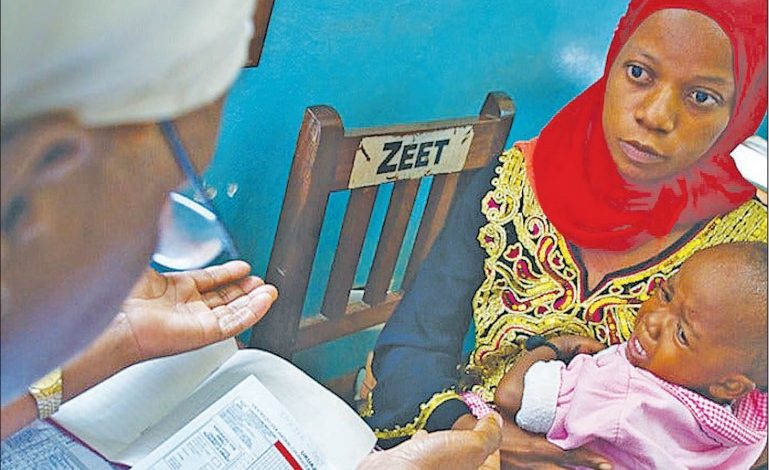More clinics now in Tanzania, don’t fall behind

IN the grand drama of Tanzanian healthcare, the government has been playing a solid lead role, putting in serious budget muscle. With data fresh from the Ministry of Health’s 2023/24 and 2024/25 budgets, the story is clear: More clinics, more equipment, more specialties.
Between 2021 and 2024, Tanzania added a whopping 1,144 new health facilities and that is jumping from 8,549 to 9,693. That is a lot of new doors for people to walk through when they need help.
Plus, essential medicines’ availability at public facilities has shot up from 58 to 79 per cent, so folks are not just getting seen, they are more likely to get treated properly too. Sounds like a healthcare party, right? Well, hold your applause.
Here is the kicker: Having a clinic nearby doesn’t mean much if the care inside it is bad. According to the World Health Organisation, about 5 million people die each year from poor-quality care, while 3.6 million die, because they never even get access to care.
So yes, bad healthcare kills more people than no healthcare at all. So, the Tanzanian government’s challenge is not just to build more clinics and stock more pills. It is about making sure every clinic and health worker delivers care that is actually good enough to save lives.
Actually, we are living in the Fourth Industrial Revolution (FIR), where smartphones can talk to satellites and AI can diagnose diseases faster than your average doctor. But here is the rub: If Tanzania wants to keep pace and give its people real health outcomes, the system needs a tech-savvy makeover.
The global dream is to achieve Sustainable Development Goal 3 (SDG 3): Healthy lives and well-being for all ages. The key player in this dream? Universal Health Coverage (UHC). UHC is not just about having insurance or access to a clinic, it is about having quality care that’s safe, affordable and effective.
ALSO READ: Front-of-Pack Labelling: citizens’ voices in the fight against NCDS
In Tanzania’s corner, the 2023 Universal Health Insurance (UHI) Act is a gamechanger. It’s like the VIP pass to healthcare for every citizen, reducing those dreaded out-of-pocket costs and expanding access.
Alongside this, the government’s been throwing resources at modern hospitals, high-tech equipment and training healthcare workers to turn the tide on illness. Despite these advances, quality improvement is proving tougher than assembling IKEA furniture without instructions. Many health facilities still struggle with risks that threaten patient safety and good outcomes.
Why? Because the system faces three major villains: Lack of guidance on what to fix first; Healthcare workers lacking motivation or knowledge to fix problems and No clear benchmarks or improvement roadmaps. Enter SafeCare, the healthcare quality crusader.
Since 2011, this initiative has been working like a healthcare coach, helping clinics, especially those with limited resources take measured steps to improve quality.
SafeCare provides internationally recognised standards and a stepwise methodology, so health facilities know exactly where they stand and how to improve. In Tanzania, over 1,300 facilities have taken up this challenge, tackling everything from waste management to emergency protocols, from reporting medication errors to using surgical safety checklists.
These are not just bureaucratic hoops; these changes save lives and restore faith in the healthcare system. The good news? Technology and data are no longer science fiction here. SafeCare’s digital platforms track quality progress in real-time, making it easier to standardise healthcare and bring even the most remote clinic in line with global standards. But here is the twist: Despite having the tools, many clinics move at a snail’s pace.
This means governments, donors, civil society and private sector partners must sync like a well-oiled band. It is not enough to build hospitals; we must invest in training healthcare workers, digital health infrastructure and accountability mechanisms. Policymakers should use data-driven insights to tackle the worst quality issues headon. Donors should shift from quick fixes to long-term support.
ALSO READ: How Tanzania benefits from economic diplomacy
And all stakeholders must collaborate, because fixing health systems is not a solo sport. Improving healthcare quality is not just a bureaucratic checkbox. It is about reducing preventable deaths, winning patients’ trust and building a health system that withstands future shocks.
Tanzania’s progress is promising, showing that with the right partnerships and policies, big wins are possible. But the road ahead demands grit, persistence and a collective commitment.
If everyone including the government, private sector, donors and communities work together to adopt proven best practices, Tanzania can close most of the quality gaps. Imagine a future where every Tanzanian can walk into any clinic and get care that’s safe, effective and respectful. That is not a pipe dream, it is the next frontier.
Health for all, quality for all
Building more clinics was step one. Step two is making sure those clinics work like well-tuned machines delivering quality care that changes lives. Digital tools, data-driven decision-making, motivated health workers and strong leadership are the secret ingredients to this recipe. As Tanzania marches towards Universal Health Coverage and the Sustainable Development Goals, it must remember: Healthcare is not just about how many people are reached, but how well they are treated. Let us not just count clinics and pills let us count lives saved. After all, what is the point of building a hospital if it doesn’t heal? The writer is SafeCare Tanzania Programme Director.





